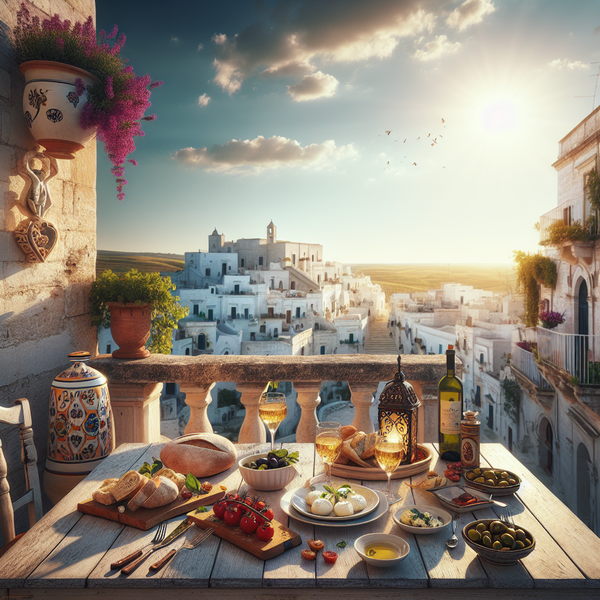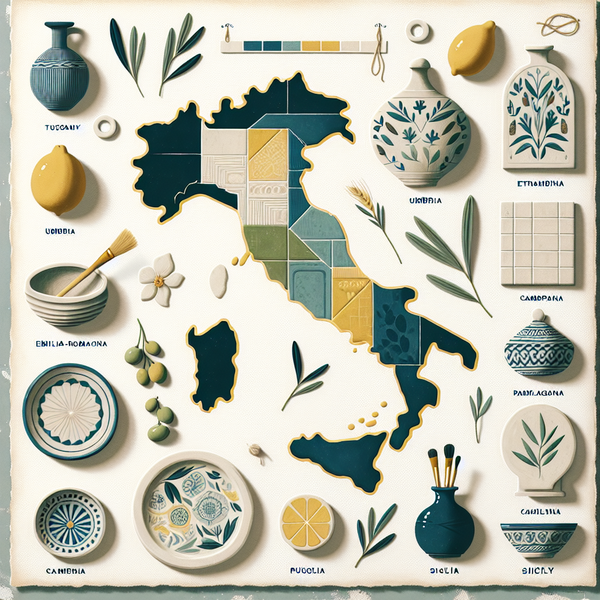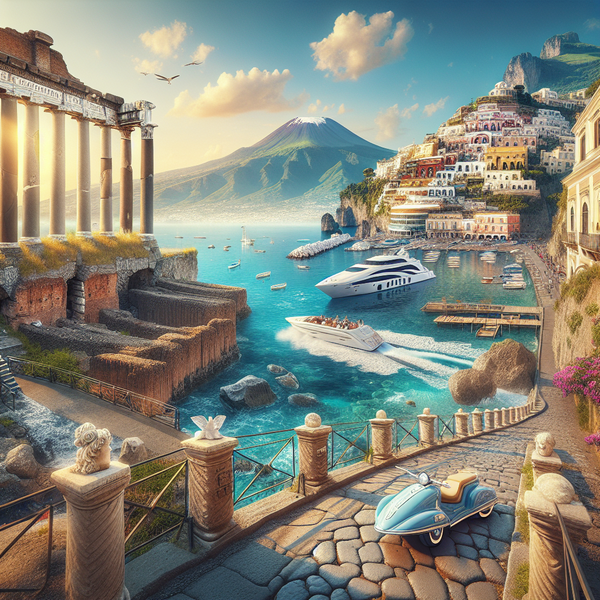Few places in Italy can rival the dazzling charm of Puglia’s white cities. From Ostuni’s bright limestone walls that shimmer under the Mediterranean sun to Locorotondo’s circular beauty surrounded by vineyards, these towns encapsulate the soul of Southern Italy. Here, every alley whispers history, every terrace offers a postcard view, and every whitewashed wall tells a story of resilience and purity.
Go to the section
ToggleThe Magic of Ostuni: The Queen of White Cities
Ostuni, often called the “White City,” is a maze of winding streets and gleaming buildings perched on a gentle hill. Its whitewashed facades are not just an aesthetic choice; they have a practical and symbolic meaning. Historically, the lime used to paint the houses had disinfectant properties, protecting inhabitants during harsh times. Today, that same lime reflects sunlight, illuminating the city’s charm and earning Ostuni a place among Puglia’s brightest jewels.
At its heart lies the stunning Ostuni Cathedral, with a rose window that gleams above cobbled streets. Cafés spill onto tiny piazzas where locals sip espresso under bougainvillea-covered balconies. Whether you arrive in the golden light of sunrise or the magical hour before sunset, Ostuni never fails to dazzle visitors with its ethereal glow.
Locorotondo: Circular Perfection and Whitewashed Elegance
Locorotondo, whose name means “round place,” is a feast for both the eyes and the soul. Its perfectly circular historic center is a labyrinth of narrow lanes lined with immaculate white houses adorned with colorful geraniums. Every turn offers serenity and a sense of harmony rarely found elsewhere.
Locorotondo is also part of Puglia’s famous “Itria Valley,” known for its rolling vineyards and iconic trulli houses. Here, artisanal wines, particularly the locally acclaimed white varieties, are the pride of the region. Visitors can walk through its terraces, taste exquisite wines, and pause to enjoy stunning views over the surrounding olive groves and vineyards.
Cisternino: Authentic Flavors in a Whitewashed Haven
Nestled close to Locorotondo, the white town of Cisternino offers a slower, authentic Puglian rhythm. Its old quarter is a maze of archways and secret courtyards, where time seems to have stopped. But what truly defines Cisternino is its food scene. The town’s butcher shops double as informal steakhouses, allowing visitors to pick their cuts of meat and have them grilled on the spot.
Between mouthwatering meals and scenic views, Cisternino encapsulates the essence of local life—simple, delicious, and unapologetically genuine.
Alberobello and the Trulli Landscape Beyond the White Cities
A short drive from Ostuni and Locorotondo lies Alberobello, famous for its trulli—unique limestone dwellings with cone-shaped roofs. While not entirely whitewashed like Ostuni, the city shares the same sense of harmony and brightness that connects all of Puglia’s white cities. Strolling through Alberobello feels like stepping into a fairytale village designed in pure stone and light.
Visitors can stay overnight in beautifully restored trulli, experiencing centuries-old architecture with modern comforts. The combination of design simplicity and rural authenticity makes Alberobello an essential stop on any Puglia itinerary focused on the white cities.
Martina Franca: Baroque Majesty Among the White Towns
Martina Franca stands out with a refined elegance that complements its whitewashed neighbors. Known for its Baroque palaces and ornate churches, this city offers a more urban yet still luminous charm. Its old town blends white buildings with decorative flourishes, showcasing Puglia’s rich architectural heritage.
Beyond its aesthetics, Martina Franca is alive with music and culture. The narrow lanes host summer festivals that enliven the atmosphere with melodies, street food, and local wines. The contrast of baroque splendor against whitewashed walls creates a uniquely Puglian experience.
Why Puglia’s White Cities Shine So Bright
There is a reason why travelers are irresistibly drawn to Puglia’s white towns. The uniform color palette enhances harmony, purity, and sunlight reflection, creating postcard-perfect sceneries. This unique combination of natural light and architectural design gives these towns their magnetism.
The white lime finish keeps homes cooler during hot summers and amplifies the intensity of Puglia’s blue skies. These aesthetic and practical details together produce one of the most photogenic regions in all of Europe, adored by photographers, architects, and dreamers alike.
How to Experience the White Cities Like a Local
Visiting Puglia’s white cities is more than just sightseeing—it’s about living in their rhythm. Start early when the streets are empty, and the sunlight begins to warm the stone. Pause at a café for a cornetto and espresso, and later explore local artisan shops selling handmade ceramics, linen, and olive oil.
Some of the best activities include:
- Taking a walking tour through Ostuni’s alleys at sunset
- Participating in a wine tasting in Locorotondo
- Sampling grilled meats at Cisternino’s local spots
- Staying in a trullo in Alberobello for an authentic night’s rest
Beyond the White Towns: Coastal Light and Inland Wonder
While Ostuni, Locorotondo, and Cisternino form the core of the white town route, the nearby coastline adds another layer of wonder. The Adriatic Sea sparkles beneath limestone cliffs, and small fishing villages like Monopoli and Polignano a Mare provide dazzling extensions of the inland whiteness. Their bright façades frame turquoise waters, offering perfect contrast for spectacular photos.
Further inland, hidden hamlets continue the theme with rustic elegance: ancient masserie (farmhouses) converted into boutique hotels, surrounded by olive groves and golden fields. These spaces preserve the authentic rural life of Puglia while embracing sustainable luxury.
Tips for Planning Your White City Journey
Getting Around the White Cities of Puglia
Renting a car remains the best way to explore Puglia’s white cities. Public transport between small towns can be limited, while a car allows travelers to meander through olive-studded landscapes and stop for panoramic views at leisure.
Where to Stay in Ostuni, Locorotondo, and Beyond
Accommodation options blend rustic charm with modern amenities. You can choose to stay in a trullo, a masseria, or a boutique hotel with terraces overlooking historic centers. No matter where you rest, waking up to white walls and sun-kissed landscapes feels truly magical.
What to Eat in Puglia’s White Towns
Each city offers a culinary highlight:
- Ostuni: Focaccia with cherry tomatoes and local olive oil
- Locorotondo: Light white wines and handmade orecchiette pasta
- Cisternino: Grilled meats from traditional butcheries
- Martina Franca: Cured capocollo and artisanal cheeses
End every meal with a glass of local limoncello or a creamy gelato enjoyed under starlit skies.
The Lasting Impression of Puglia’s White Cities
Puglia’s white cities are more than just destinations—they are a feeling. To wander their alleys is to step into an eternal moment where simplicity meets splendor. They glow not merely from their lime-covered walls, but from the warmth of their people and the richness of their traditions.
Whether you’re walking up Ostuni’s slopes, savoring a wine in Locorotondo, or exploring the timeless trulli of Alberobello, each experience resonates beyond sight—it stays in the soul. That is the true magic of Puglia’s white cities: light that lingers, memories that shine, and a promise to return.



